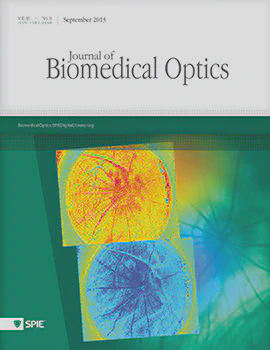Abstract
Laser speckle contrast imaging (LSCI) offers a cost-effective means to image blood flow in vivo. However, it is not commonly used to image rodent retinas because of the challenges associated with imaging through the curved cornea and delivering light through the highly scattering lens. A solution to overcome these problems by using LSCI in conjunction with an endoscope to obtain high spatiotemporal blood flow images is described. Its utility is demonstrated by imaging blood flow changes in rat retinas using hyperoxic, hypercapnic, and visual (flicker) stimulations. Hypercapnia increases blood flow, hyperoxia decreases blood flow, and visual stimulation increases blood flow in the retina relative to basal conditions. The time-to-peak of the LSCI response to visual stimulation is also measured. This approach may prove useful to investigate dysregulation in blood flow-evoked responses in retinal diseases and to evaluate treatment strategies in rodents.
